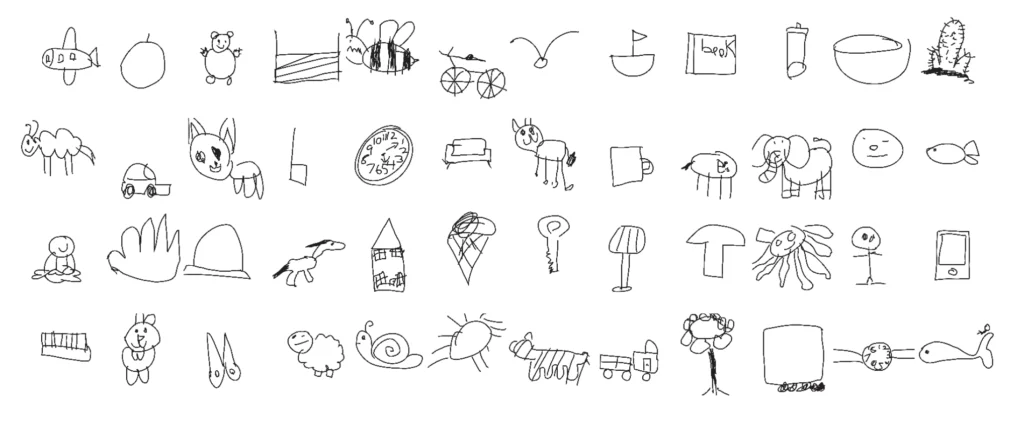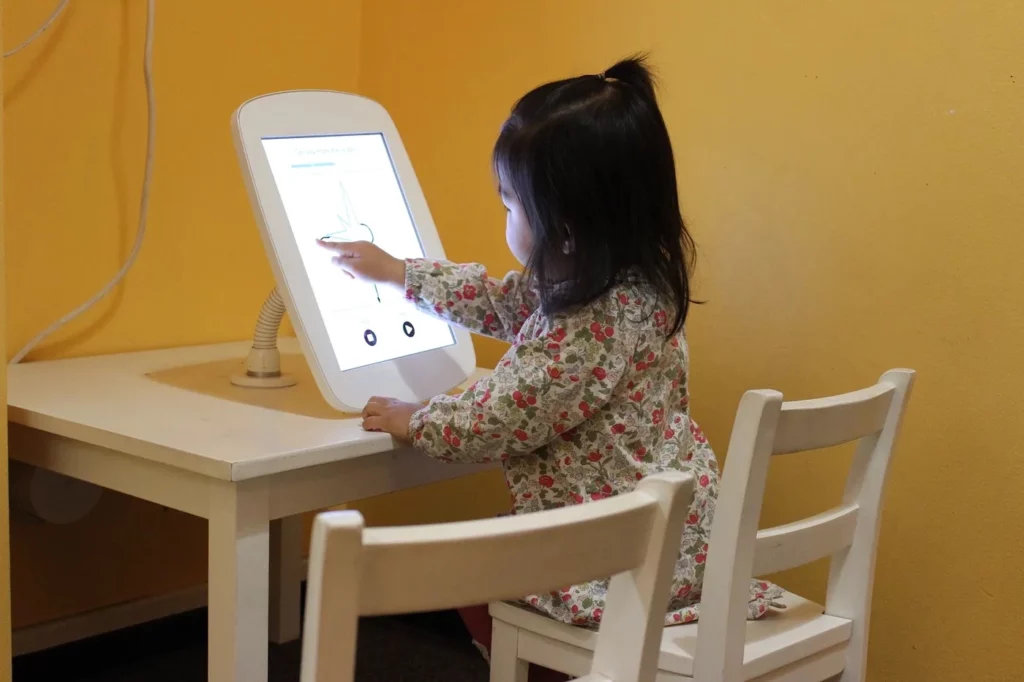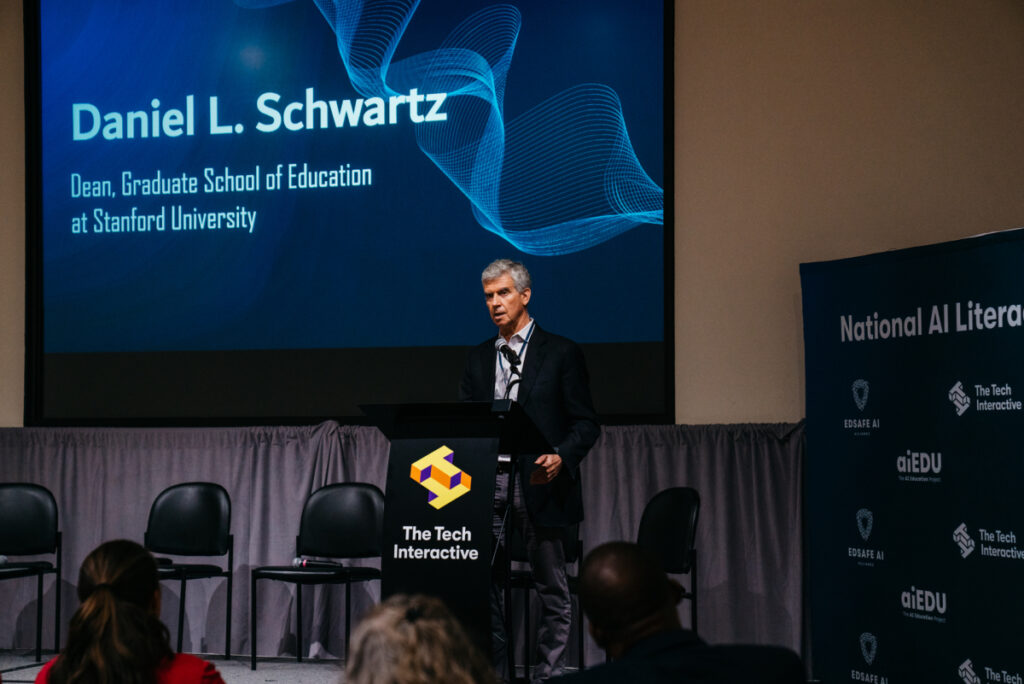Children’s ability to draw recognizable objects and to recognize each other’s drawings improves concurrently throughout childhood, according to a new study from Stanford University.
In work published Feb. 8 in Nature Communications, the researchers used machine learning algorithms to analyze changes in a large sample of drawings of children from the ages of 2 to 10. The study, conducted by researchers Bria Long, Judith Fan, Holly Huey, Zixian Chai, and Michael Frank, found that children’s ability to draw and recognize objects develops in parallel. It also found that not all the improvement in drawing recognizability throughout childhood could be attributed to improvement in drawing skill or inclusion of stereotypical attributes, such as tall ears on a rabbit.
“The kinds of features that lead drawings from older children to be recognizable don’t seem to be driven by just a single feature that all the older kids learn to include in their drawings,” said Judith Fan, an assistant professor of psychology in the School of Humanities and Sciences and faculty affiliate of the Stanford Accelerator for Learning. “It’s something much more complex that these machine learning systems are picking up on.”
Using machine learning enabled the researchers to interpret the large sample size of drawings in this study and highlighted subtleties that helped them understand how children perceive the world, and how they communicate those perceptions through drawing.
Data and doodles
To conduct the study, researchers worked with staff members from the Children’s Discovery Museum of San Jose to install a kiosk within the museum. The kiosk displayed recorded video prompts of the study’s first author, Stanford psychology postdoctoral fellow Bria Long, asking children to draw certain animals or objects. After receiving the prompt, children using the kiosk would then have 30 seconds to draw the object using their fingertip on a digital tablet. Children using the kiosk were also asked to identify the objects drawn by other children in a guessing game, and to trace objects shown on the screen to assess their motor skills.

After collecting around 37,000 individual drawings from the kiosk, the researchers used machine learning algorithms to analyze each drawing’s recognizability. Then, the researchers collected data on the distinct object parts of each image in around 2,000 of the drawings, annotated by adult participants who were asked to describe what part of the object the children had drawn with each pen stroke (e.g., “head” or “tail”).
“Scientists have been interested in children’s drawings for quite a long time,” said Long, referencing past studies on how children draw recognizable objects. “But this is the first time that we have been able to combine digital drawings with innovations in machine learning to analyze drawings at scale over development.”
The researchers hope that future work in this area will include similar studies across different cultural groups, in both children and adults.
Drawing conclusions
This large-scale work adds robust support to previous findings that as children grow up, their ability to both recognize and draw animals and objects increases. The fact that the analysis assessed such a sizable set of drawings allowed the researchers to infer more nuanced conclusions than past studies, where far fewer drawings were analyzed by humans.
Although the recognizability of the drawings increased with age, the researchers found that the increase wasn’t completely explained by improvements in motor control. Even trademark features that children learn to recognize and include in their drawings over time, such as eight legs on a spider, did not fully explain the increase. This suggests that children’s improvement over time reflects not just what they directly observe or are able to produce, but also a change in how they think about objects.
“Children’s drawings contain a lot of rich information about what they know. … Just because your child isn’t drawing something really well doesn’t mean that they’re not expressing interesting knowledge about that category.”
—Bria Long, Postdoctoral fellow in psychology
“Children’s drawings reflect not just their ability to draw, but something about what they know about these objects,” said Long. “And you see these changes both in their ability to produce these drawings and also to recognize other children’s drawings.”
According to the researchers, even drawings that are unrecognizable can convey clues about the child’s intent. For instance, a drawing of a tiger may not be recognizable as a tiger, but is still clearly an animal. Children were also able to convey information about the real-world size of the drawing’s subject, even if the drawing itself was otherwise mysterious.
“Children’s drawings contain a lot of rich information about what they know. And we think this is a really cool way to learn about what children are thinking,” said Long. “Just because your child isn’t drawing something really well doesn’t mean that they’re not expressing interesting knowledge about that category.”
Senior author Michael Frank is the Benjamin Scott Crocker Professor in Human Biology, professor of psychology, and professor, by courtesy, of linguistics in the School of Humanities and Sciences. Frank is also a member of Stanford Bio-X, the Maternal & Child Health Research Institute (MCHRI), and the Wu Tsai Neurosciences Institute; a faculty affiliate of the Institute for Human-Centered Artificial Intelligence (HAI); and director of the Symbolic Systems Program. This work was funded by the National Science Foundation, the National Institutes of Health, and a Jacobs Foundation Fellowship.
This story was first published by Stanford News.



